Address
304 North Cardinal St.
Dorchester Center, MA 02124
Work Hours
Monday to Friday: 7AM - 7PM
Weekend: 10AM - 5PM
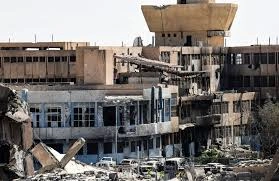
There are a thousand ways to kill a man in a warzone, and not all of them involve bullets. Some deaths happen quietly, in the margins of spreadsheets, behind locked doors in Washington conference rooms. A decision is made, a budget is cut, a contract is pulled. No shots fired, no explosions—just the slow grind of systemic collapse. The bodies pile up just the same.
That’s how USAID killed the health clinics of northern Syria in 2018. Not with malice, not even with intent—just sheer, world-class incompetence. It was the kind of disaster that doesn’t make the front page, because it lacks the cinematic flair of an airstrike or a chemical attack. It was, in many ways, worse.
For years, USAID had been propping up Syria’s fragile healthcare system, funnelling money into NGOs like Médecins du Monde to keep hospitals open in the middle of a warzone. They paid for trauma care, maternal health, antibiotics, vaccines—the only lifeline for thousands of civilians stranded in one of the most brutal conflicts of the 21st century.
And then, in 2018, the money stopped. No warning, no contingency plan, no soft landing—just a funding freeze and an abrupt exit, like a deadbeat dad skipping town. Clinics locked their doors overnight. Doctors, already working under impossible conditions, were forced to flee or work unpaid. Pregnant women were left with nowhere to give birth. Gunshot wounds, shrapnel injuries, routine infections—left to fester in the absence of even basic care.
The reason? Officially, it was a “foreign aid review.” Unofficially, it was an administration tired of writing checks for a war with no political upside. The Trump White House had decided that Syria was someone else’s problem. And USAID, ever the loyal paper-pusher, took the order and executed it with all the precision of a lobotomized accountant.
The fallout was immediate. The few hospitals that remained standing were flooded with patients, collapsing under the weight of a system that had just lost its last support beam. The people USAID had once called “partners” were left scrambling for alternative funding, trying to hold together a healthcare network that had already been stretched past breaking point.
USAID, for its part, shrugged and moved on. That’s the real crime, the real rot at the core of this whole disaster. It’s not just that they cut the funding—it’s that they never cared enough to look back. The agency’s entire model of humanitarian aid is built on temporary scaffolding, doomed to collapse the moment a shift in policy or a change in administration turns off the tap. USAID’s behavior in Syria is a scandal but no one cared – because no one was watching.
This isn’t just a story about mismanagement. It’s a story about a system designed to fail. USAID didn’t just abandon Syria’s health clinics—they made sure there was nothing left to salvage.
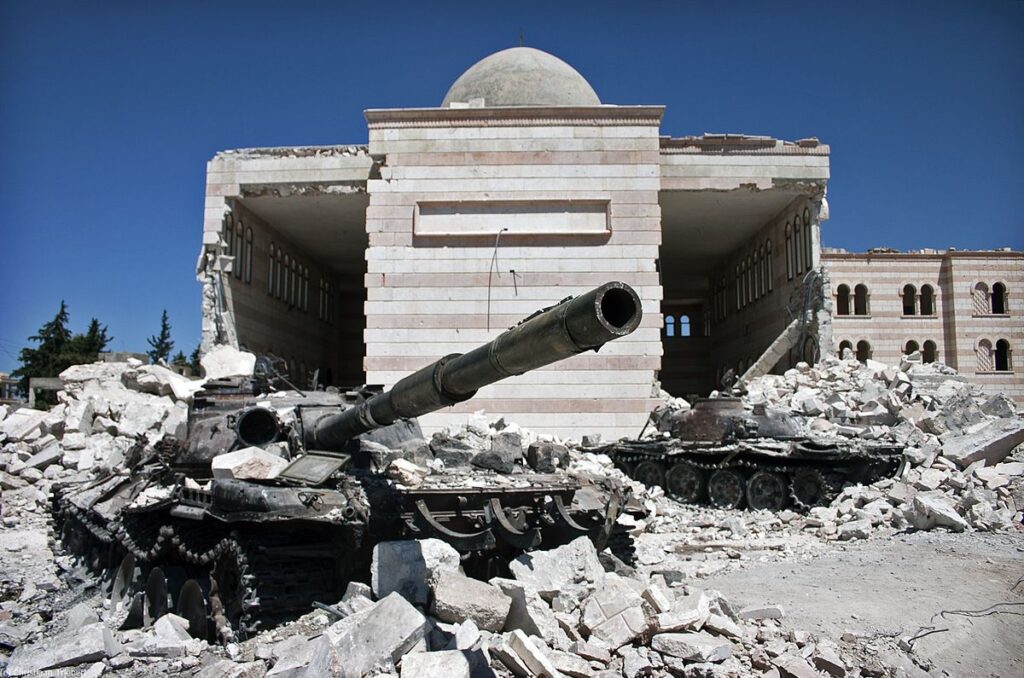
USAID has always sold itself as the benevolent arm of American foreign policy, the humanitarian wing of the empire, the clean-up crew for the wreckage left behind by geopolitical chess moves. But the reality of its work in Syria was something far uglier: a slush fund for middlemen, a contractor gold rush, a money pit where aid was funneled through so many layers of bureaucracy that by the time it reached the people it was meant to help, it had already been stripped to the bone.
The official line was that USAID’s mission in Syria was to support healthcare infrastructure in a country shattered by war. They poured millions into NGOs, built out supply chains, and kept clinics running in the middle of active conflict zones. On paper, it was a noble effort—until you looked at how the money actually moved.
Take Médecins du Monde (Doctors of the World), one of USAID’s key partners in northern Syria. The organization ran critical health clinics, offering trauma care, maternal health services, and mental health support in a country where all three were in catastrophic short supply. Their Istanbul office, which oversaw operations in northern Syria, was 60% funded by USAID. That wasn’t just a helpful donation—that was the lifeline.
And like every USAID-backed operation, it was built on an unstable foundation. The second Washington lost interest, everything collapsed.
For years, USAID had been feeding a system that was entirely dependent on its cash flow, without ever setting up long-term sustainability. They had no exit strategy, no transition plan—just a bottomless pool of funding that they assumed would always be there. When the Trump administration pulled the plug, that illusion shattered overnight. Clinics closed. Staff walked. Thousands were left to fend for themselves.
USAID’s failure in Syria wasn’t just about cutting funding—it was about building a system so fragile that when the money dried up, there was nothing left but rubble. This wasn’t aid work. This was a slow-motion car crash, and USAID had been in the driver’s seat the whole time.
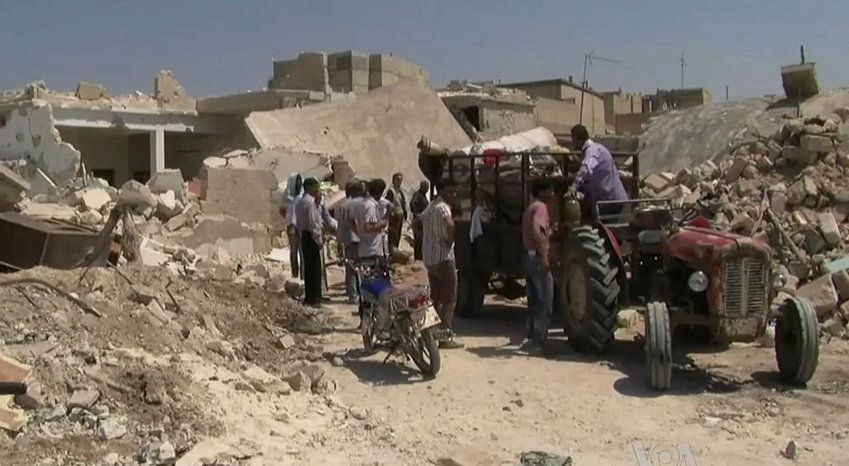
When USAID funding for northern Syria’s health clinics was slashed in 2018, the fallout wasn’t gradual. It was immediate, brutal, and entirely predictable. The moment the money stopped, the entire healthcare system USAID had been propping up crumbled like a house of cards in a sandstorm.
The official excuse? A “foreign aid review,” the kind of vague bureaucratic doublespeak that means nothing and explains even less. Unofficially, it was something much simpler: cost-cutting disguised as policy. The Trump administration had decided that Syria wasn’t worth the expense anymore. They wanted out, and they wanted out fast. No transition period, no safety net—just an abrupt and total severance.
The decision hit like a decapitation strike.
Before the cut, USAID had been pumping millions into healthcare initiatives in northern Syria, covering everything from basic checkups to emergency trauma care. When that cash flow vanished, the remaining hospitals—already overwhelmed—became warzone bottlenecks. Those lucky enough to be admitted found themselves in overcrowded rooms, waiting hours, sometimes days, for treatment. Those who weren’t lucky? They just died.
The method of execution was mundane:
Médecins du Monde, once the backbone of medical care in northern Syria, was among the hardest hit. They had relied on USAID to fund 60% of their operations. With that money gone, they had no choice but to shut down their clinics, abandoning the very people they had spent years trying to save.
This wasn’t an accident. This was USAID doing what it does best—building unstable systems, throwing money at problems without any long-term strategy, and then walking away when the bill got too high.
The worst part? They knew exactly what would happen. They just didn’t care.
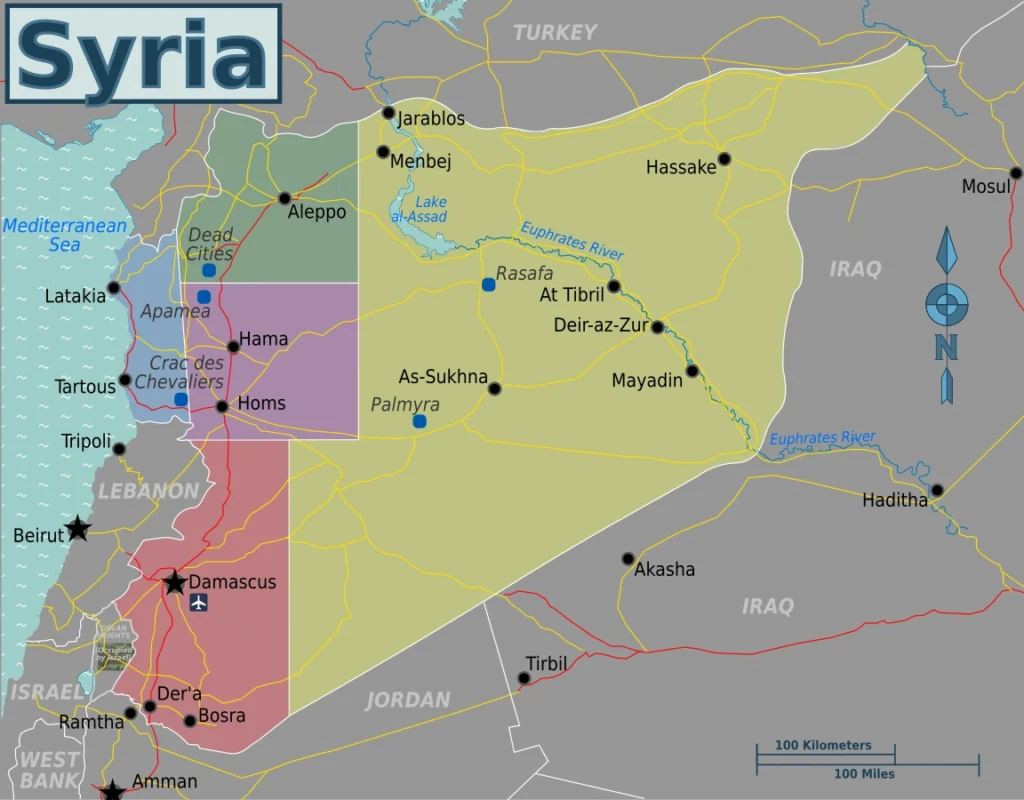
The downfall of Médecins du Monde (Doctors of the World) in northern Syria wasn’t the result of an airstrike, a terrorist attack, or some unstoppable force of nature. It was a slow, suffocating death by bureaucracy—an execution carried out in PowerPoint presentations, budget reviews, and Washington boardrooms. While some of this was likely associated with a black budget, most of it is available in the USAID OIG Report.
For years, Médecins du Monde had been on the frontlines, running critical healthcare clinics in a warzone where hospitals were already in short supply. They weren’t some bloated NGO with six-figure executives and luxury offices in Geneva. They were the ones standing between thousands of Syrians and death. Primary care, emergency treatment, mental health services, maternal care—they did it all. And for years, USAID was their lifeline, providing 60% of their operational budget.
That lifeline was severed in 2018 with a single funding freeze. USAID didn’t offer a contingency plan. No transition funding. No gradual phase-out. One day, the clinics were operational. The next, they weren’t. It was a kill shot, and the damage was irreversible.
When USAID cut Médecins du Monde off, it wasn’t just one or two hospitals that felt the blow—it was an entire network. Within weeks:
This wasn’t just an inconvenience. This was a death sentence.
With no funding, medical staff faced a grim choice:
Many of the best-trained doctors left, gutting an already fragile system. This wasn’t just a staffing crisis—it was a total collapse of human capital. You can replace buildings. You can import medical supplies. But when you lose an entire workforce of experienced medical professionals, the damage isn’t reversible.
With Médecins du Monde’s clinics gone, patients had nowhere to go.
The remaining hospitals had been operating at capacity even before USAID’s withdrawal. With thousands of new patients flooding in, the system cracked, then shattered.
When the scale of the disaster became undeniable, USAID did what it does best—pretended it wasn’t happening.
There was no official response, no emergency funding, no attempt to clean up the wreckage they had created. USAID’s leadership had checked out.
They had:
✔️ Funded a fragile, unstable system.
✔️ Yanked the funding with no warning.
✔️ Ignored the fallout.
Médecins du Monde had spent years stitching together a system that was barely holding on. USAID ripped out every suture and left the wound gaping open. The result? An entire region left without healthcare, an untold number of deaths, and zero accountability from the people who caused it.
This wasn’t just a funding cut. It was a catastrophic policy failure—one that USAID never even bothered to acknowledge.
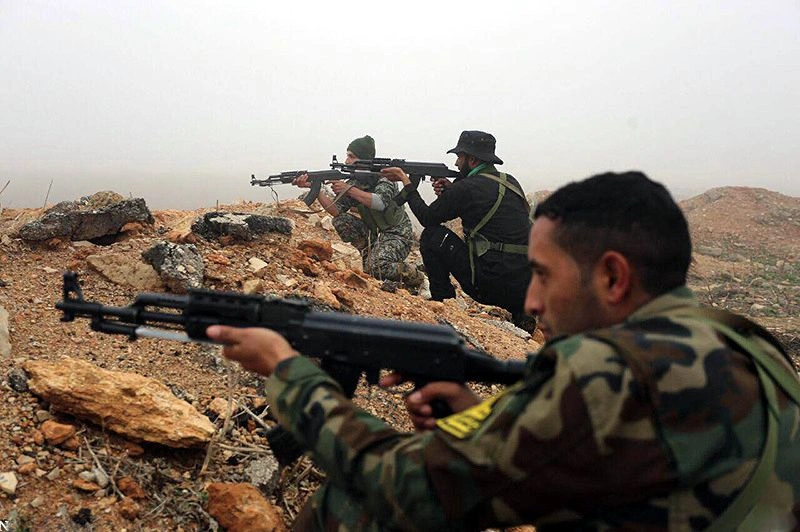
When USAID pulled the plug on Syrian healthcare funding, it wasn’t just Médecins du Monde that collapsed—it was an entire ecosystem. The clinics were the first domino to fall, but the chain reaction that followed was far worse.
Northern Syria’s fragile healthcare infrastructure, already stretched past its breaking point, went into full-scale meltdown. The loss of USAID-funded clinics meant thousands of patients had nowhere to go. The few hospitals still standing were overwhelmed, running out of supplies, and drowning under the weight of a crisis that didn’t have to happen.
The human toll of USAID’s funding freeze can’t be measured in dollars. It’s measured in untreated wounds, in mothers bleeding out during childbirth, in children dying from preventable infections. It’s measured in the absence of care.
With no USAID-funded clinics left, patients swarmed the remaining hospitals—facilities that were already beyond capacity. The few doctors left in the region found themselves in a warzone triage nightmare.
Before the funding cut, these hospitals had barely been holding on. Afterward, they were operating at 200-300% capacity, with no backup plan and no reinforcements.
USAID hadn’t just been funding clinics—it had been funding the entire supply chain. That meant:
When USAID left, so did the shipments. Supply chains collapsed instantly, and hospitals burned through their last stockpiles in weeks.
The result?
It was the closest thing to a medieval plague modern Syria had seen. And all of it was completely avoidable.
The people most affected by USAID’s retreat were the ones least able to survive it.
USAID had funded a system that millions depended on, then took an axe to it and walked away. The people they left behind? Not their problem.
The collapse of USAID-funded healthcare wasn’t just a Syrian problem. It sent shockwaves through the entire humanitarian sector.
The real tragedy was that none of this was inevitable. USAID could have transitioned the funding, built sustainable infrastructure, or at the very least, given a warning.
Instead, they did what every bloated, incompetent bureaucracy does best—
They abandoned their mess and pretended it never happened.
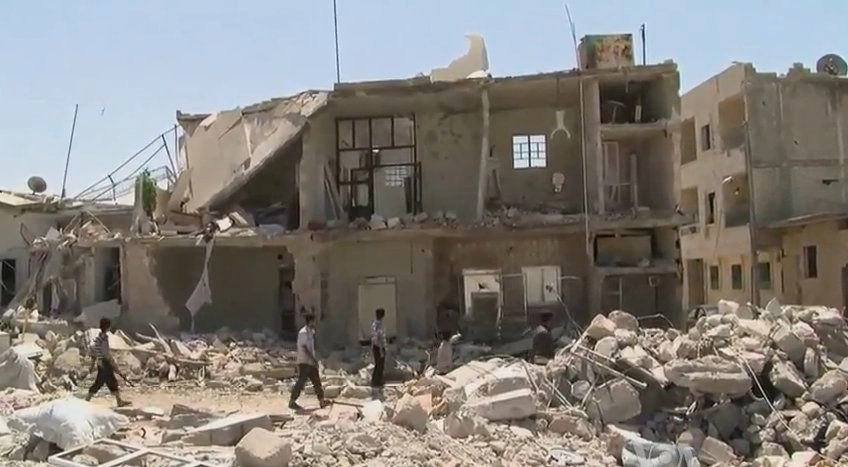
When the full impact of USAID’s funding withdrawal became undeniable, the international response was predictable: press releases, strongly worded letters, and empty promises.
NGOs scrambled to contain the fallout. European governments made vague commitments to increase aid. Advocacy groups issued warnings about a looming humanitarian catastrophe. But none of it mattered. The damage had already been done, and the people responsible for it were already moving on to the next disaster.
USAID, of course, had no official comment. They had dropped Syria like a bad investment and weren’t interested in looking back.
Médecins du Monde and other aid organizations begged for emergency funding. Their message was clear:
But USAID wasn’t listening. The State Department brushed off concerns, offering vague reassurances that humanitarian needs were being “evaluated.” Translation: They didn’t care.
Some European donors stepped in with emergency funding, but it was a fraction of what was needed. Médecins du Monde managed to keep a few operations running, but the scale of the collapse was too great.
The clinics that had closed stayed closed. The doctors who had fled didn’t come back. The people who had died stayed dead.
One of the biggest casualties of USAID’s withdrawal was the destruction of medical supply chains.
USAID hadn’t just been funding clinics—it had been funding the entire logistical backbone of Syria’s healthcare network. When they left, there was no system in place to replace them.
It wasn’t just that USAID had left. It was how they left. No transition, no contingency plan, no coordination with international partners. Just a sudden vacuum where an entire healthcare system used to be.
In Geneva, Brussels, and Washington, the debate over foreign aid funding raged—for a while. Experts lined up on both sides:
But at the end of the day, it didn’t matter.
By the time governments stopped arguing and decided to act, it was already too late.
The hospitals had collapsed. The supply chains were gone. The damage was permanent.
USAID never had to answer for it. No accountability, no reckoning. Just a trail of abandoned clinics, empty hospital beds, and a crisis that could have been avoided.
USAID’s Syrian healthcare collapse wasn’t an accident. It was a case study in systemic failure, a masterclass in how to turn an aid program into a slow-motion catastrophe. Every decision, every bureaucratic misstep, every layer of incompetence stacked on top of another until the entire structure collapsed under its own weight.
And the worst part? It was all avoidable.
Here’s what should have been obvious from the start:
USAID designed failure into the system from day one. By funding 60% of Médecins du Monde’s operations in northern Syria, they created absolute financial dependency. No diversification, no secondary funding sources, no contingency plan.
So when USAID money vanished overnight, so did the clinics. It wasn’t a question of if they would collapse—it was just a matter of how fast.
The lesson? If you’re going to bankroll an essential service in a warzone, make sure it doesn’t implode the second you lose interest.
There was no grand strategic vision behind the USAID withdrawal. No careful calculation of impact. No attempt to ensure a smooth transition.
The entire decision-making process boiled down to:
No on-the-ground assessment. No plan for what would happen when clinics shut down. No coordination with European donors or alternative funding sources.
USAID didn’t just withdraw—they executed a bureaucratic hit job on Syria’s healthcare system.
USAID loves to pretend it’s an altruistic force, a shining example of American humanitarianism. But when the money stopped flowing, they didn’t hesitate. They cut and ran, leaving hospitals to collapse and patients to die.
This wasn’t about “foreign aid efficiency” or “policy reviews.” It was about a fundamental lack of concern for the people USAID claimed to help.
If the goal was real humanitarian aid, the funding wouldn’t have been structured like a short-term hedge fund investment. If the goal was stability, USAID wouldn’t have designed an aid system so fragile that one funding freeze could send an entire healthcare network into a death spiral.
The lesson? Never mistake USAID for an actual humanitarian agency. It’s an instrument of U.S. foreign policy. And when the policy shifts, the people on the ground—NGOs, doctors, patients—become collateral damage.
The clinics USAID once funded are gone. The doctors USAID once supported have fled. The patients USAID once claimed to care about? Left to die in overcrowded hospitals, in their homes, in the streets.
And USAID? They simply moved on. No accountability, no public reckoning—just another failed program buried under layers of bureaucracy, another humanitarian disaster filed away in a forgotten report.
Northern Syria’s healthcare system will never fully recover. The consequences of USAID’s withdrawal weren’t just felt in 2018—they will be felt for generations.
Because when an empire kills, it doesn’t just leave bodies in the streets. It leaves institutions in ruins, communities abandoned, and a silence that speaks louder than any explosion ever could.